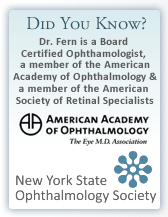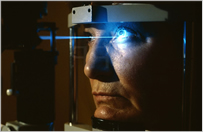Diabetic Retinopathy
The damaged small vessels of the retina leak fluid and blood, causing swelling of the retina. These changes decrease vision if the central part is affected. Laser is done to seal these leaks. However laser is done to prevent or retard further loss of vision and not to improve vision. In severe changes when new blood vessels have grown (Proliferative Diabetic Retinopathy), multiple sittings of laser are needed to regress these vessels. This is called Pan Retinal Photocoagulation and is highly effective in preventing severe visual loss due to recurrent bleeding in the vitreous.
Retinal tears and holes
In a retinal tear or a hole without a retinal detachment, laser is done to seal the hole and prevent or limit the detachment.
Other Retinal vascular disorders
like retinal vein occlusions also require laser at times. In venous occlusions, the central retina may swell up due to fluid collection leading to reduced vision. Such cases require laser to decrease the swelling, which may help in improving your vision. Venous occlusions may also lead to new vessel formation, which needs laser to regress these vessels.


